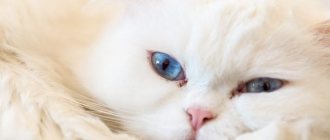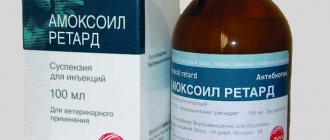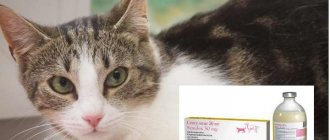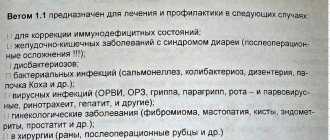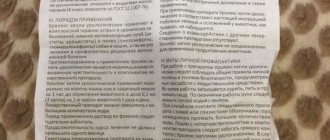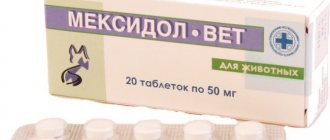Types of broad spectrum antibacterial agents
Broad-spectrum antibiotics include those that are active against more than 1 type of pathogen.
Antibiotics are effectively used to destroy bacterial, protozoan and fungal microflora in cats
According to the method of introduction into the body, antibiotics for cats are divided into means for local and general use.
Local ones include:
- ointments;
- aerosols;
- candles;
- drops;
- gels.
Common ones include:
- injection solutions;
- pills;
- capsules;
- suspensions.
By the way of influencing pathogenic microorganisms, antibacterial drugs are of 2 types:
- bactericidal (causes the death of bacteria);
- bacteriostatic (prevent the proliferation of pathogens, gradually leading to their extinction, and remove their waste products).
In some diseases, such as staphylococcal urethritis, the use of bactericidal agents is contraindicated, since the massive death of the bacterial population can block the lumen of the urethra and cause urolithiasis.
In case of sepsis, when the clock is ticking, on the contrary, only bactericidal drugs can save the life of the animal.
What are antibiotics?
So, antibiotics are medicines that allow one way or another to kill a bacterium (bactericidal drugs) or prevent it from growing and multiplying (bacteriostatics).
Classification
There are many drugs that are divided into groups depending on their chemical structure:
- penicillins;
- cephalosporins;
- tetracyclines;
- chloramphenicol;
- macrolides;
- aminoglycosides;
- glycopeptides;
- lincosamides, etc.
Release forms
Based on which organ the treatment is aimed at, the doctor must select a specific form of antibiotic. They can be of general action (systemic) and local. If it is necessary to treat a wound on a cat’s skin, then ointments, sprays and powders are prescribed, and if the mucous membranes are damaged, special ointments and drops are prescribed. Systemic antibiotics have the most pronounced effect
, they are used in the form of tablets, intravenous and intramuscular injections. In addition, there are various candles and aerosols.
Use of antibiotics
Antimicrobials are used in the treatment of many diseases. They can be used for the following pathological conditions:
- abscesses after injuries (for example, bites);
- skin infections;
- eye infections;
- pyometra;
- giardiasis;
- chlamydia;
- in the postoperative period (including after sterilization).
Penicillins are used to treat burns in cats, purulent wounds, and cuts. Systemically used for pleurisy, peritonitis, and infections of the genitourinary system. Streptomycins have similar uses; moreover, they are often prescribed in combination with penicillins. Tetracycline ointments are widely used for conjunctival lesions
and skin. Cephalosporins, like sulfonamides, are prescribed for infections of the gastrointestinal tract, respiratory tract, enteritis and pyometra. Gentamicin is effective against inflammation of the nasopharynx, eyes and gastrointestinal tract infections.
When are antibiotics needed?
As an additional remedy, antibiotics are prescribed for cancerous tumors.
The following diseases of cats are indications for taking antibiotics:
- Pneumonia.
- Respiratory infections.
- Eye inflammation.
- Intestinal infections.
- Pyelonephritis.
- Urethritis.
- Cystitis.
- Festering wounds.
- Skin infections.
- Abscesses.
- Leptospirosis.
- Pseudomonosis.
As an additional treatment, antibiotics are prescribed for cancerous tumors to prevent infection from entering the affected tissue.
Antibiotic therapy is also carried out in the period after surgical interventions to prevent infection and suppuration.
Which antibiotic to choose?
When choosing a medication, it is advisable to determine the causative agent of the disease and its sensitivity to a specific drug. You immediately have to take into account other factors: the animal’s susceptibility, the characteristics of its metabolism depending on age and the presence of certain pathologies - renal/liver failure or diabetes mellitus.
If the diagnosis is not in doubt, preference is given to narrow drugs. It is advisable to use one drug as monotherapy. Complex use of antimicrobial agents is prescribed if:
- mixed type infection;
- severe infection requires immediate treatment even before diagnosis to expand the spectrum of exposure;
- you need to enhance the effect of one antibiotic with another;
- as a result of a combination of drugs, their toxic effect is reduced by prescribing smaller doses of each medication;
- if monotherapy was ineffective.
Monotherapy with antibiotics is considered more gentle for cats
The duration of antibiotic therapy depends on the virulence of the pathogen, the duration of the disease, and the danger to the pet. In acute forms, the course is shorter. After the symptoms disappear, therapy continues for another 2-3 days. Stop the medicine immediately.
Side effects, contraindications
The most common side effect of antibiotics is a disruption of the intestinal microflora (dysbacteriosis). Drugs in this group have a detrimental effect not only on pathogenic, but also on beneficial microorganisms.
This side effect can be neutralized by the simultaneous intake of probiotics, which populate the intestines with the necessary microflora.
It is recommended to give them to the cat for another 2 weeks after completion of antibacterial treatment.
Be sure to read:
Traumatine for cats: instructions for use, price, reviews
Other adverse reactions to taking antibacterial drugs may include:
- Allergy to the active substance or auxiliary component (rash, scratching on the skin, focal hair loss).
- Edema of an immunological nature.
- Spasms and convulsive contractions of muscles.
- Breathing disorders, up to suffocation.
- Vomiting, diarrhea, stomach pain.
Antibiotics can affect the reproductive system , so at least 3 months should pass between the end of treatment and the mating of the cat. Otherwise, the offspring may be born with defects.
Antibiotics are used in the treatment of any infectious diseases.
If a cat has liver and kidney diseases, antibacterial drugs can cause their exacerbation.
In case of disturbances in the functioning of these excretory organs, taking the aminoglycoside monomycin is absolutely contraindicated, and in case of some skin diseases, bacteriostatic drugs such as chloramphenicol and syntomycin are prohibited.
The period of pregnancy and breastfeeding is also a contraindication to antibiotic therapy .
Treatment of kittens should be carried out under the supervision of a veterinarian.
Pros and cons of antibiotics
Antibiotic therapy has its pros and cons. All these medications not only promote faster healing, but also cause harm to the caudate. You can minimize the negative consequences by selecting the most effective medication for a specific disease and correctly calculating the dose. In this case, all the advantages of this treatment method will appear:
- several doses of antibiotics will be enough to achieve the effect;
- the pet’s condition will quickly improve;
- the number of side effects is minimized;
- the antimicrobial effect will be effective even with a large number of microorganisms.
A properly selected antibiotic quickly restores the animal
However, when using antibiotic therapy, the disadvantages of this process must also be taken into account. The main negative effect of long-term treatment with this group of drugs is a decrease in the quadruped’s immunity. In addition, the following disadvantages of antibiotic therapy can be listed:
- possible addiction to the medication with a long course;
- an error in dose calculation can lead to extremely serious consequences;
- possible side effects in the form of allergic reactions and gastrointestinal disturbances;
- After treatment, it is necessary to restore the disturbed intestinal microflora.
We invite you to familiarize yourself with: Cats with different eyes by color: photos and breeds
Rules of application
Only a veterinarian should select the medicine and dosage to treat a cat. If the dose is too small, the infection will take hold in the body, even if the pet’s condition has returned to normal.
Only a veterinarian should select the medicine and dosage for treating a cat.
Exceeding the required dose can cause intoxication and even death of the animal due to the toxic effects of antibacterial drugs.
It is important not to use the medicine after its expiration date.
The drug should be purchased only from licensed pharmacies that specialize in veterinary medicines.
If the doctor prescribed the drug by injection, he must administer the first one in the clinic.
This will allow you to evaluate the reaction of the cat’s body to a foreign substance, and in case of individual intolerance, take action and prescribe another antibiotic.
It is important not to use the medicine after its expiration date
The remaining injections can be given at home according to the schedule prescribed by the veterinarian.
The least sensitive place for a puncture in a cat is the withers. The skin on it should be squeezed, insert the needle there so that it is inside and not out, and quickly inject the solution. There is no need to treat the puncture area with alcohol.
If the cat is prescribed the drug in tablet form, it is placed deeper on the tongue or crushed with food. If you need to give the tablet to a kitten, it is recommended to first divide it into parts.
It is important not to stop treatment after symptoms disappear, but to complete the full course of antibiotic therapy.
Otherwise, the pathogenic microflora will not be completely eliminated, but will go into a dormant form and become resistant to this product.
Be sure to read:
Imaverol: instructions for cats, when indicated and contraindicated, method of application, dosage
Antibiotics usually last 1-3 weeks.
The course of treatment for some dermatological infections can last 2-3 months and interrupting it is contraindicated.
Rules of use for cats and dogs
- The first dose is always a shock dose, that is, twice the usual dose. Subsequently, the usual dose is prescribed
- Dermatological diseases take a long time to treat, antibiotic therapy lasts up to several months, and with increased doses
- For diseases of external organs - wounds, otitis media, inflammatory eye diseases - local antibiotics are prescribed
- You should not take antibiotics if microflora cultures have been performed and the results are negative.
- Antibacterial agents must be continued for three days after the symptoms of the disease have disappeared.
- Taking antibiotics continues throughout the course, without interruption. If you stop the course of the prescribed drug, then all the existing microflora in the cat’s body will become resistant to the drug and it will not work in the future.
Proper use of antibacterial agents contributes to the speedy recovery of the cat’s body.
The use of antibiotics is not dangerous if used correctly.
Therefore, you should not be afraid if veterinarians prescribe drugs from this group to your furry pet, because with their help the disease will recede much faster.
Antibiotics used to treat cats
The choice of an appropriate antimicrobial drug should be based on the results of laboratory tests and the characteristics of the cat's body.
If the drug is chosen incorrectly, pathogenic microorganisms will not only not die, but will also lose sensitivity to the active substance of the antibiotic.
The following antimicrobial medications are most commonly prescribed to cats for a variety of infections.
Amoxicillin
A medication from the penicillin group, prescribed for infections of the skin, joints, genitourinary organs, bronchi and lungs.
Antibiotics usually last 1-3 weeks
After surgery, amoxicillin is given to the cat to prevent inflammation.
In case of renal failure, the dosage of the drug must be calculated with extreme caution.
Amoxicillin is also produced under other names:
- Amoxiclav (tablets, powder for the preparation of injection solution).
- Betamox (suspension for injection).
- Sinulox (tablets).
The price of the drug in tablets is from 180 rubles, solution for injections – from 230 rubles.
Azithromycin
Belongs to the category of macrolides and azalides, kills pathogenic microflora in the gastrointestinal tract, respiratory organs, urinary and reproductive systems.
The antibiotic has a prolonged effect on bacteria and fungi
The product is also effective for skin infections and rhinotracheitis (inflammation of the upper respiratory tract caused by a herpes virus).
The antibiotic has a prolonged effect on bacteria and fungi, i.e. the substance is released into the blood gradually, and the period of its effect on the body increases.
The duration of treatment is usually 5 days, less often – 1-2 weeks. Under certain circumstances, the drug is prescribed during pregnancy and lactation, but the dosage is reduced by 1.5-2 times.
The antibiotic is also represented by other drugs:
- Azikan (8% solution for injection);
- Avimecin;
- Sumamed.
The price of drugs starts from 60 rubles.
Ceftriaxone
Belongs to the cephalosporin group of 3rd generation drugs and has a prolonged effect.
The medication fights pathogens in the urinary organs and is effective against sepsis, meningitis, gangrene, abscesses and severe suppuration.
Active against gram-positive and gram-negative aerobic bacteria, many strains of salmonella and shigella. The cost of the antibiotic is from 34 rubles.
Terramycin
Available in the form of an eye ointment and a skin spray. Destroys gram-positive and gram-negative microorganisms, protozoa, mycoplasmas, proteus, chlamydia, klebsiella, rickettsia.
Be sure to read:
Vasotope for cats: instructions, price and reviews
The antibiotic in the form of a solution is administered once into the muscle, in the form of a spray - used locally for wounds and skin infections.
The average price of a spray is 350-450 rubles.
Lincomycin
Belongs to the group of lincosamides, is prescribed mainly for infections of bone and muscle tissue caused by streptococci, staphylococci, pneumococci, clostridia, anthrax pathogens, mycoplasmas, corynebacteria.
Also effective for infected wounds and abscesses. In the presence of liver and kidney diseases, the antibiotic is contraindicated. The cost of a bottle is from 400 rubles.
Commonly used antibiotics for cats
What medications are most often used?
- Amikacin is an effective drug prescribed for the treatment of infectious diseases caused by Salmonella, Klebsiella, and Escherichia coli. The medicine is injected into the muscle every 8 hours at 5-10 mg per kilogram of body weight. The drug is not prescribed if the cat has urolithiasis or suffers from kidney disease.
- Gentamicin 4% is a long-known aminoglycoside that is effective against gram-negative microbes. Intramuscular administration of gentamicin will help quickly cure pneumonia, peritonitis, arthrosis, and cope with colds. Injections are given 2 times a day at a rate of no more than 4.4 mg per kilogram of the pet’s weight. The course should not be longer than 5 days. Gentamicin is not prescribed to elderly and weakened cats suffering from nephrotic diseases. The antibiotic may cause hearing complications.
- Neomycin is an antibiotic with a broad spectrum of action, effective against almost all infectious diseases of the gastrointestinal tract and skin staphylococcal infections. Neomycin is available in different forms: as an ointment, as an injection for injection into a muscle, or as a powder (which must be dissolved in water) for drinking. Neomycin is administered 3 times a day for 3-7 days at a dose of 10 mg per kilogram of body weight.
- Amoxiclav is a mixture of amoxicillin and clavulanic acid. The highly effective product is available in the form of an injection solution and in tablets, which are given to pets in a quarter for every 5 kg of body weight, 2 times a day for a course of 10 days.
- Enrofloxacin (Baytril) is a fluoroquinolone and acts on any bacteria. The dosage of the injection solution is 0.5 ml per 5 kilograms of body weight. Treatment lasts from 5 to 10 days. The effect is observed within 30 minutes after the injection into the muscle.
- Ciprofloxacin is also a fluoroquinolone. It can be bought in the form of a solution for injections and tablets. The medication is effective against staphylococci, streptococci, enterobacteria, intestinal, pseudomonas, hemophilus influenzae, mycoplasma and chlamydia.
- Tetracycline can also cope with the treatment of many diseases, including diseases of the genitourinary system, pneumonia, etc. It is prescribed for herpes and conjunctivitis.
We suggest you read: Symptoms and signs of ear mites in cats. Let's talk about otodectosis
All these drugs must be purchased at a veterinary pharmacy.
Regular pet stores do not sell medicinal veterinary drugs.
The use of human medicinal drugs for cats is not recommended because it is very difficult to calculate the dosage of the active substance. However, in some cases, when the veterinary pharmacy is far away, it is better to use human antibiotics than to abandon a sick animal to its fate. For treatment, you can take the medications listed below (dosage is calculated per kilogram of animal weight).
- The penicillin group is used to treat sepsis, pleurisy, purulent inflammation of the skin, purulent peritonitis, respiratory tract infections, endometritis in all locations. Before use, add 2-4 ml of sodium chloride into the bottle:
- benzylpenicillin novocaine salt is administered intramuscularly at 30,000-40,000 units per kilogram of weight;
- benzylpenicillin sodium and potassium salts (penvetin in veterinary medicine) are administered intramuscularly every 6 hours at 10,000-20,000 units per kilogram of weight;
- ampicillin sodium salt - intramuscularly every 6-8 hours at a dosage of 15-30 mg per kilogram of body weight;
- bicillin 5 (used for the treatment of chronic forms of the disease after exacerbations) - intramuscularly once every 2 weeks, 40,000-60,000 units per kilogram of weight;
- Antibiotics of the tetracycline group are necessary for the treatment of inflammatory diseases of the respiratory system and gastrointestinal tract. Medicines are given orally (by mouth) at the rate of 20-25 mg per kilogram of weight, 2 times a day;
- tetracycline eye ointments are placed under the eyelid for inflammation of the eye mucosa 2 times a day. Tetracycline eye drops are instilled 1-2 drops 3 times a day;
- The cephalosporin group is used mainly for sepsis, respiratory diseases and gastrointestinal diseases. Cephaloridine and cephalothin are administered intramuscularly 3 times a day, 5-10 mg per kilogram of body weight (due to pain, the medicine is diluted with novocaine).
Some human medications are suitable for cats
Does a cat need antibiotics for wounds?
For boils, inflamed wounds, and purulent skin infections, tetracycline ointment is prescribed.
When a cat has purulent wounds, it is almost always necessary to resort to antibiotics.
If there is a risk of infection, a prophylactic course of amoxicillin is administered.
When a cat has purulent wounds, it is almost always necessary to resort to antibiotics. Otherwise, the infection can spread throughout the body and cause a deadly disease - sepsis.
Such wounds are easy to identify, since pus is released from them, the hair at the site of injury is stuck together and emits a putrid odor. An increase in body temperature may also indicate that the process of suppuration has started.
To accept or not to accept?
Of course, the answer is clear – accept. But only when necessary and only those prescribed by the veterinarian. There are a lot of diseases and self-medication is life-threatening
pet. For example, the symptoms of many viral diseases are very similar to the symptoms of bacterial invasions, however, they are treated differently. In addition, there is always the possibility of developing anaphylactic shock, which is not possible to cope with at home.
An incorrect dosage or an incorrectly selected drug will not cure the animal, but will cripple it. If you have doubts about the qualifications of the veterinarian who prescribed the treatment, you should go to another specialist. You need to make sure that the therapy is written clearly and clearly.
Treatment in most cases is carried out at home. If the animal is calm, then you can even do the injections yourself. Now the pharmaceutical industry in veterinary medicine is actively developing, so more and more convenient forms of antibiotics are appearing
for cats, for example, tablets with a certain taste. It is necessary to carefully follow the recommendations on time, dosage and frequency of administration.
Another point in successful treatment is the quality of the medicine. The drug for your pet should be checked no less carefully than for yourself. You need to buy antibiotics for cats in licensed specialized pharmacies. And before administering the drug, you must make sure that the expiration date has not yet expired.
Only if all these points are met can we talk about successful treatment that will be safe for the pet.
It is sometimes possible to cure an infectious disease in domestic cats only with the help of antibiotics. But they must be used with great caution and as prescribed by a veterinarian. One of the most commonly used is Ampicillin. For cats, it is prescribed in case of bacterial infection.
Can a cat treat a wound with iodine?
It is contraindicated to treat a purulent wound with iodine and brilliant green. If it does not fester, you can lubricate its edges with iodine without getting deep into the damage.
Before applying the medicine, it is necessary to clean the damaged area from hair and dirt. Dried pus can be softened using hydrogen peroxide (up to 3%), and the fur must be carefully cut off with scissors.
suitable for cleaning the injured surface .
For what diseases are antibiotics prescribed to cats?
Antibiotic drugs are prescribed to animals, including cats, for certain diseases.
Indications for this type of treatment are various purulent and inflammatory processes resulting from injuries, for example, bruises, lacerations of the skin and muscle tissue, postoperative sutures or in places of bites by other animals.
Postpartum injuries to the uterus and genital organs are often accompanied by infectious inflammatory processes that require an antibacterial course of treatment.
Purulent and inflammatory processes on the mucous membranes of the eyes or mouth, diseases of the ears and teeth, respiratory and colds are also treated with antibiotics.
Indications and methods of use
To combat a number of infections, Sinulox is considered the most effective. For cats, the drug is prescribed by a veterinarian only on the basis of test data and examination. Self-medication is prohibited. The medication is used for the following diseases:
Infectious lesions and enteritis of the gastrointestinal tract.
Infectious diseases of the respiratory tract and bronchi.
Dermatological diseases, including soft tissue infections.
Kidney and urinary tract infections.
Rhinitis accompanied by atrophy of the mucous membrane.
- Oral diseases.
Some antibiotics kill infections caused by surgery. Sinulox (for cats) is considered the most effective for this purpose. The instructions allow you to use the drug not only for cats, but also for dogs.
The antibiotic tablet is administered orally, preferably with a small portion of food. Tablets are given 2 times a day for 7 days. A single dose of the drug is calculated at the rate of 12.5 mg per 1 kg of cat weight.
Treatment of dermatological diseases and chronic cystitis is carried out from 10 days to 1 month, depending on the severity of the condition.
There is another form of the antibiotic "Sinulox". For cats, injections are no less suitable than tablets. They are injected under the skin (in the area of the withers or knee fold). The bottle with the suspension must be shaken before use, since the suspension may give a slight sediment; the contents can be stored open for no longer than 30 days.

